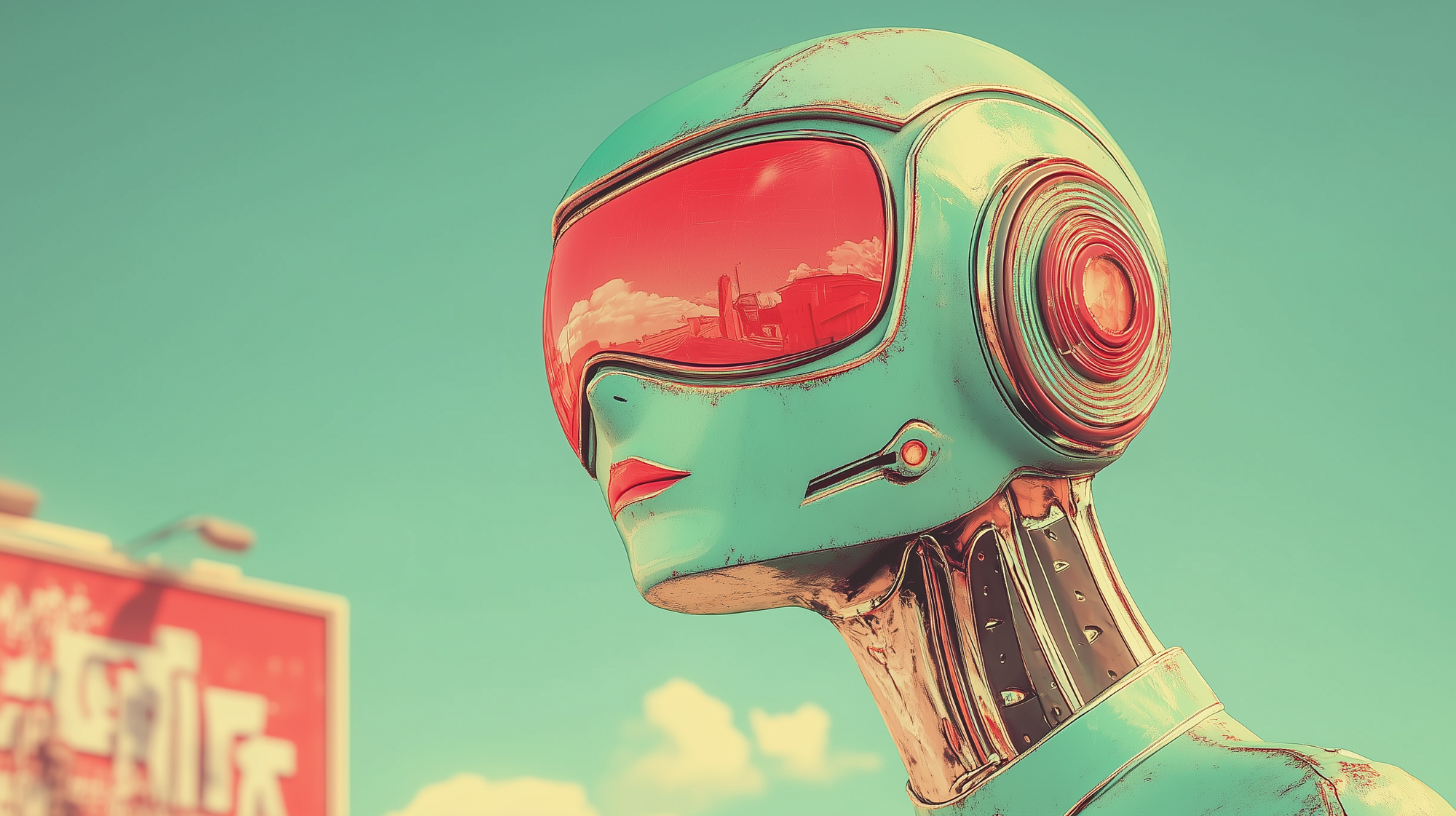Digital Vibes: The Next Frontier of Human-AI Connection
As the AI market matures, personality and usability differences will become key differentiators between competing platforms.

Over the past year, I've been experimenting with leading AI chatbots like ChatGPT, Claude, Gemini, and Perplexity for creative work and research. My approach is simple: test the same prompt across different platforms and compare their responses. What strikes me isn't just the variety of answers I receive, but how I find myself favouring certain chatbots over others—not necessarily because they're more accurate, but because of their "vibe." I'm not the only one to make this observation. A recent New York Times article highlighted how Silicon Valley's tech community increasingly favours Claude over ChatGPT for the same reason: its distinctive personality. Further, as new features have been added to these tools, and their interfaces have evolved, I've noticed how some are just more pleasant and enjoyable to use. As the AI market matures, these personality and usability differences will become key differentiators between competing platforms, and be much more important than other performance metrics or benchmark scores.
The Psychology of AI Personalities

The current crop of frontier-level LLMs (the Large Language Models that power AI chatbots) have been fed unfathomably vast amounts of data to provide them with their knowledge, and at this point many of them have comparable smarts, because in addition to some small percentage of proprietary data, they have all been trained on similar public data sources (like Wikipedia, GitHub, and the open web). But the voice and tone and even the perspective of their output is determined through prompt engineering using what’s called a system prompt or system-level prompt. This is a custom set of instructions that are provided to the chatbot right before it engages with the user. In addition to setting high-level guidance about the chatbot’s purpose and role, it also influences its behaviour by defining the tone and style of conversation to use, along with any constraints (such as topics or questions to avoid). This intermediary step transforms the default “out of the box” chatbot into a more defined and distinctive character, effectively giving it a personality.
If you have any doubts that this aspect of chatbots is valuable, consider that Google recently paid $2.7 billion to license technology from Character.AI and re-hire its founders. Character.AI specializes in generating AI-powered characters with distinctive personalities. Having the ability to give AI a personality is a big deal and I think it's where this technology is ultimately going. If you're still not convinced, just watch the movie Her, where the main character develops a close and intimate relationship with his AI assistant. It's a cautionary tale, mind you.
The Dark Side of Digital Companionship

While the big players in AI are working hard on making their chatbots likeable, some ventures seem to be taking a different approach. The AI-powered necklace called Friend launched its web app with virtual companions that open conversations with uncomfortably personal revelations – a strategy that its 22-year-old founder has defended as making the relationships more interesting and life-like, but which many have found off-putting. Do we really want to engage with an AI that is dealing with trauma?
This raises an important question about the psychological impact of AI companions. Human beings have not yet evolved as a species to cope with this kind of pseudo-intelligence, and children are especially vulnerable. Risks range from emotional manipulation to dependency, and highlight the need for careful consideration in how we design AI personalities and safeguard against the very real potential for serious mental harm.
Designing for Human Connection

Beyond the personality of the chatbot, other aspects influence how much we like one tool over another, including ease of use and branding, both of which can greatly impact the user experience.
The visual identity of an AI tool – from its name and logo to its colours and fonts – creates an immediate impression that shapes our expectations and comfort level. Just as we form quick judgments about people based on their appearance, these design elements signal what kind of interaction we can expect. If the features are virtually the same, personal preference often comes down to taste.
The interface and features also influence the vibe of a tool though. The best AI experiences strike a delicate balance: simple enough for beginners while offering depth for advanced users. As more people become proficient with AI tools, thoughtful UX design becomes increasingly crucial in distinguishing one service from another. Ultimately people will choose the tool that suits them best, and there will be room in the market for different options to suit different tastes. That said, there will eventually be a clear market leader, and it will be the one that appeals to the most people.
The Future of AI Interaction

The way we feel about our AI tools is becoming just as important as what they can do. Think of it like choosing a favourite coffee shop – while the quality of the coffee matters, it's the overall experience that keeps you coming back. The ambiance, the staff's friendliness, and even the music (or lack thereof) all contribute to making it our go-to spot. Similarly, AI tools are becoming spaces we inhabit rather than just utilities we use. This shift brings both opportunities and responsibilities:
AI companies face the complex challenge of creating personalities that meaningfully engage users without crossing into manipulation. They need to build ethical guardrails to protect vulnerable users while maintaining engaging interactions. Additionally, they need to develop clear and transparent ways to ensure users always understand when they're interacting with AI rather than humans, especially as we move beyond text and begin to engage with voice and video-based chatbots.
UX designers are now tasked with crafting interfaces that strike a delicate balance: making AI interactions feel natural and intuitive while avoiding deception about the AI's true nature. They must design interaction patterns that maintain healthy boundaries between humans and AI assistants. Ultimately their goal is to create experiences that enhance human capabilities and connections rather than replace them.
Users will need to develop new forms of literacy around AI interaction, understanding both the capabilities and limitations of their AI relationships. This includes maintaining awareness of how AI influences their behaviour and expectations, and developing healthy habits for engagement with AI systems.
And finally, society as a whole must work toward establishing new norms around AI-human relationships, much as we developed social norms around previous technologies. This could include creating comprehensive frameworks for ethical AI personality design, and supporting broader educational initiatives about healthy engagement with AI systems.
The Path Forward

As these tools continue to evolve, their "vibes" will shape not just our user experience, but our collective relationship with technology. The challenge ahead lies in creating AI personalities that enrich our lives while preserving our authentic human connections. The future of UX design isn't just about making AI tools more capable – it's about making them more thoughtfully integrated into the human experience.
All images created with Midjourney. Editing assistance provided by Claude.
